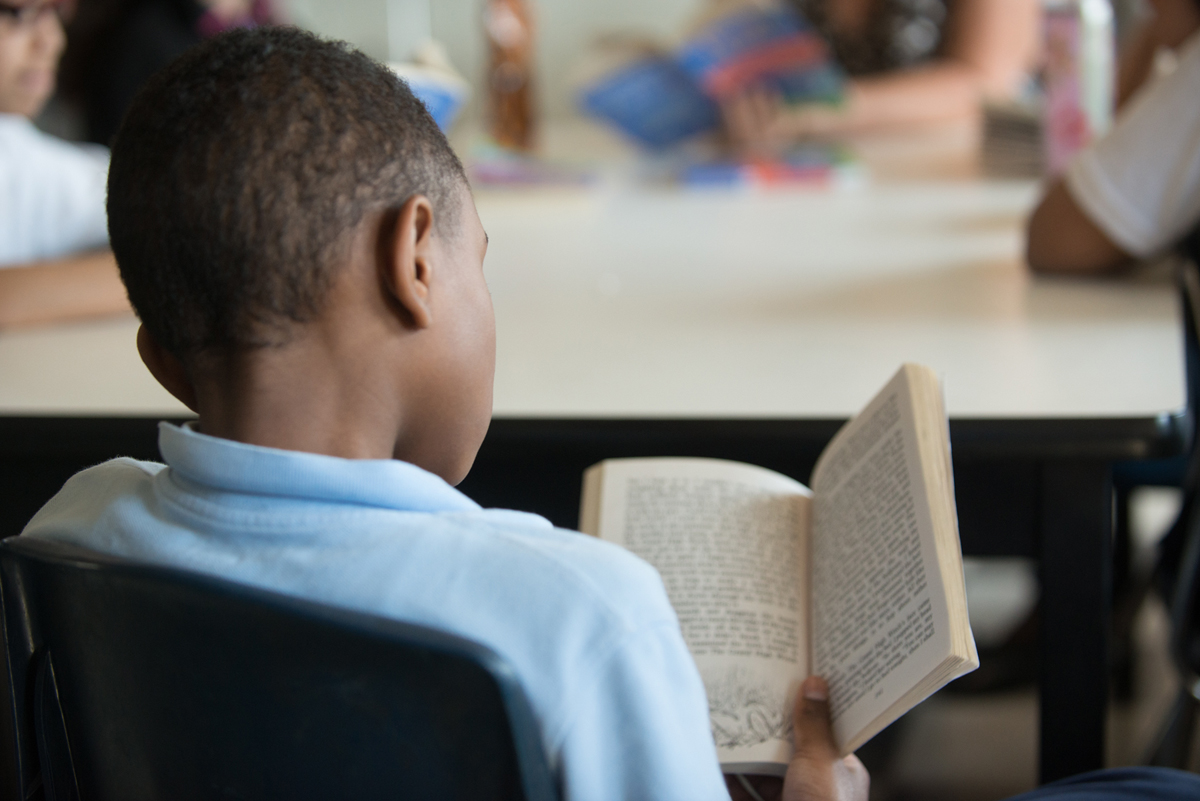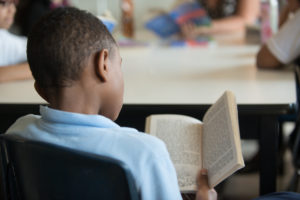Breathing In and Breathing Out

 Despite increasingly packed school schedules, one-size-fits-all curricula, and standardized testing, schools can reshape children’s days in ways that help them learn, grow, and enjoy childhood.
Despite increasingly packed school schedules, one-size-fits-all curricula, and standardized testing, schools can reshape children’s days in ways that help them learn, grow, and enjoy childhood.
In her classic book, Teacher, educator Sylvia Ashton-Warner describes the daily rhythms of classroom life. Simply and poetically, she writes that children need time to “breathe in” and “breathe out” as they go through the school day. Children, she says, will learn as naturally as they breathe if we pay attention to their physical, emotional, and cognitive needs when planning and pacing our instruction.
But in today’s educational climate, schools struggle to meet demands to teach more and more content to younger and younger children, while following often inflexible mandated curricula. The unfortunate result in many schools is over-busy days that don’t give children the time and structure they need to think, to play, to rest, to get enough food and water, and to simply be children.
I believe if we want children to grow into happy, productive adults, we must reshape the school day in ways that meet children’s needs, and not just the demands of educational policy. Here are a few ideas to try in your classroom or school.
Using Time Wisely
Changing the order of the day. Many schools schedule recess right after lunch. But working up an appetite on the playground and then eating a good, healthy lunch makes more sense than rushing through lunch and running right out to play on a full stomach. In my experience, schools that put recess first see children’s afternoon behaviors and energy levels improve.
After recess and lunch (no matter their order), many schools next push the children right into the afternoon’s instruction, with no “breathing out” time. Lack of a midday break often makes children’s afternoon a downhill journey of inattention and listlessness. Offering a quiet time, when children can experience a few moments of precious silence in the classroom reading, drawing, writing, or resting by themselves, can energize their brains and refresh their spirits. Their afternoon can then be a lively, learning-filled adventure.
Establishing a child-friendly pace. The pace of school activities—how much time we give children for each activity, and how we move them on to the next thing on the schedule—affects how much and how well children learn. These days, children have almost no time to reflect on their learning; make calm, organized transitions between subjects; or delve deeply into subjects they love. Sadly, school increasingly resembles a miniature adult world of packed schedules, multitasking, and exhaustion. Adults often bring these practices into schools with the belief that they are necessary for children’s academic success.
That belief is completely mistaken. Young children simply cannot switch easily from one class or assignment to another. Elementary schools, therefore, should not shuffle children (especially the youngest ones) from one classroom, teacher, or activity to another in a way that breaks their day into short periods.
Furthermore, when we must move children on to a new task, classroom, or teacher, we should try to do it in a calm, unhurried way. Hurried children feel frustration and anxiety. “Hurry up, children, it’s time for gym; hurry up, children, it’s time for spelling; hurry up, children, it’s time for music.” Such talk only worsens things for children who probably already feel rushed. Early childhood expert Jackie Haines tells of one kindergarten teacher who knew she’d had enough when she heard herself say, “Hurry up, children, it’s time to rest!”
Contrast this with a calm word to children to be mindful of the time: “In five minutes we’ll be ending our work period. Think about what you need to do to finish.”
It’s important, in our distracted adult world, to remember that children become deeply absorbed in the process of learning and growing. We need to help them manage this process rather than drag them helter-skelter through a hectic day.
Meeting Children’s Physical Needs
Food and water. Making sure that children have enough food and water when they need it contributes not only to healthy physical growth but to effective learning. Recognizing this, early childhood educators have long built time into the school day for very young children to have snacks. But children of all ages need snacks. Not having snacks contributes to poor attention, concentration, and attitude. Something as simple as some pretzels—perhaps from a stash kept in the teacher’s closet—or a piece of fruit from home can ease a child’s hunger.
Even in our current extremely time-conscious school environment, teachers can set up a snack table and teach children to regulate their own eating. This way of managing snack eliminates the need to stop the whole class at once and makes more teaching time available. “Self-serve” snacking also offers opportunities for practicing social behaviors, such as sharing the snack table respectfully and coming and going without disturbing others who are working.
Children need water during the school day perhaps even more than they need food. A child who’s not drinking enough water may get headaches, become dizzy, or feel very tired—hardly ideal conditions for concentrating on school work! Because children may already be slightly dehydrated by the time they feel thirsty, teachers should encourage them to drink water regularly. Children should be allowed not only to “go get a drink” but also to bring water bottles from home.
Exercise. I’m amazed at the number of schools that have cut recess and also cut or substantially reduced time for formal physical education classes. Some policymakers say these severe measures are necessary because there’s just too much school work to do and not enough time to do it.
But such policies will not help children learn more. Just as they need frequent breaks for food and water, all children need frequent exercise. While benefiting the body, exercise also delivers oxygen to the brain, affecting how children think and feel. I’ve even seen school discipline problems diminish when children are given more opportunities to exercise.
Sometimes children must stay indoors because administrators say they can’t guarantee the children’s safety on the playground. Sometimes administrators worry about the weather: A few degrees too cold or too hot can mean indoor recess. But indoor recess is a poor substitute for outdoor time. Sunlight and air matter as much to human growth as to the growth of plants and trees. Spending all day in school buildings, therefore, discourages maximum learning.
Ideally, children should go outside at least twice daily. Even a five- or ten-minute break to run around the school building or jump rope in the schoolyard can hugely impact the way children feel and perform in the classroom.
When children must stay inside, a break to do jumping jacks or aerobics to music can improve attention and attitude. Teachers need the exercise, too. Oxygen flowing to our brains helps keep us cheerful and engaging, and that is good not just for us but also for the children.
Small Changes Do Matter
Because young children spend so much time at school, rushing through school means rushing through childhood. Doing so stresses the children, their teachers, and their parents. As educators, we have it in our power to shape the school day in ways that better meet the needs of childhood. Even small changes can help ensure that all children learn at their best, all day long.
Chip Wood is a former elementary school principal and co-founder of Northeast Foundation for Children. In addition to Yardsticks, he is the author of Time to Teach, Time to Learn: Changing the Pace of School, and co-author of Responsive School Discipline: Essentials for Elementary School Leaders.
Tags: Lunchroom, Movement